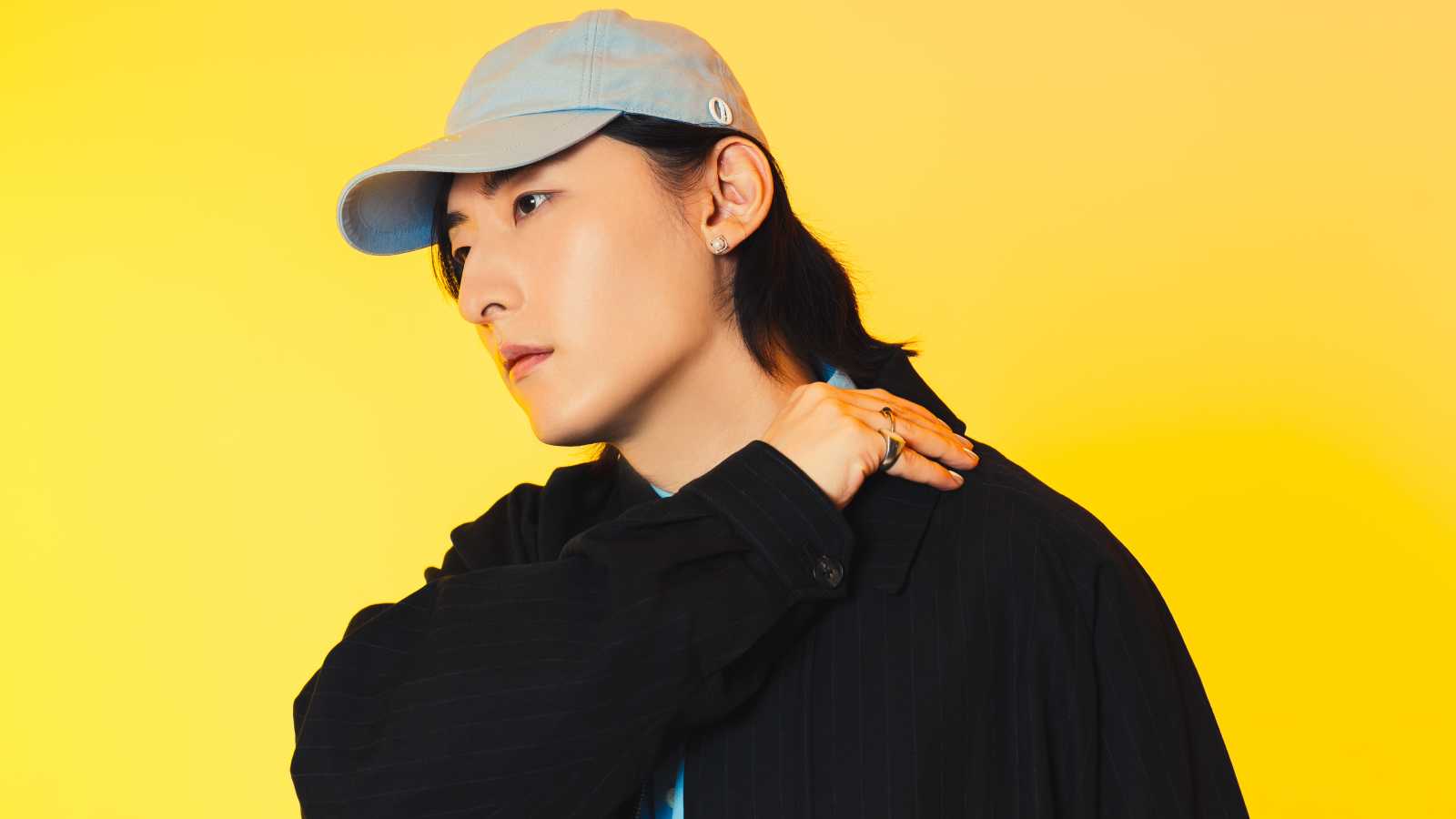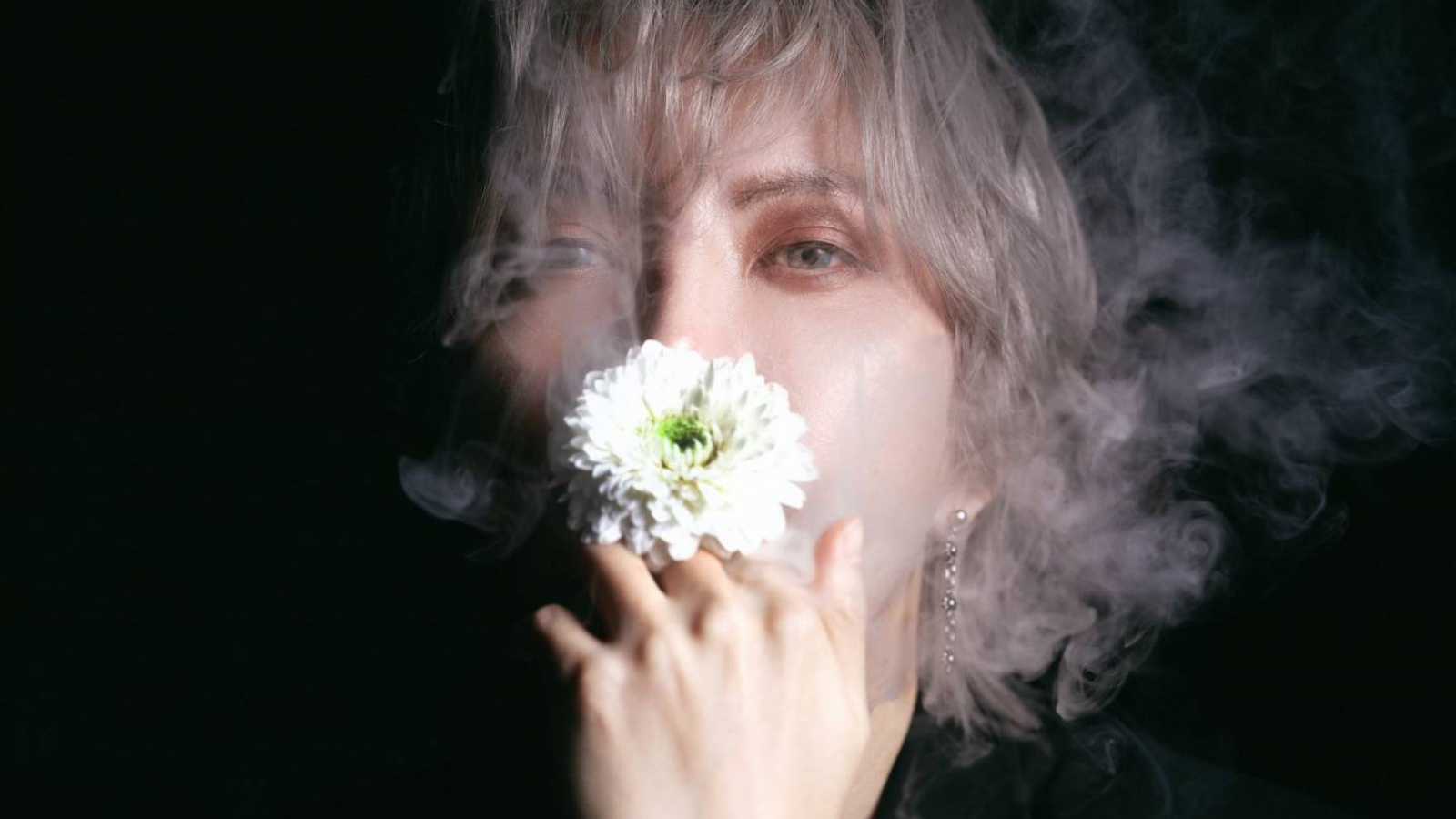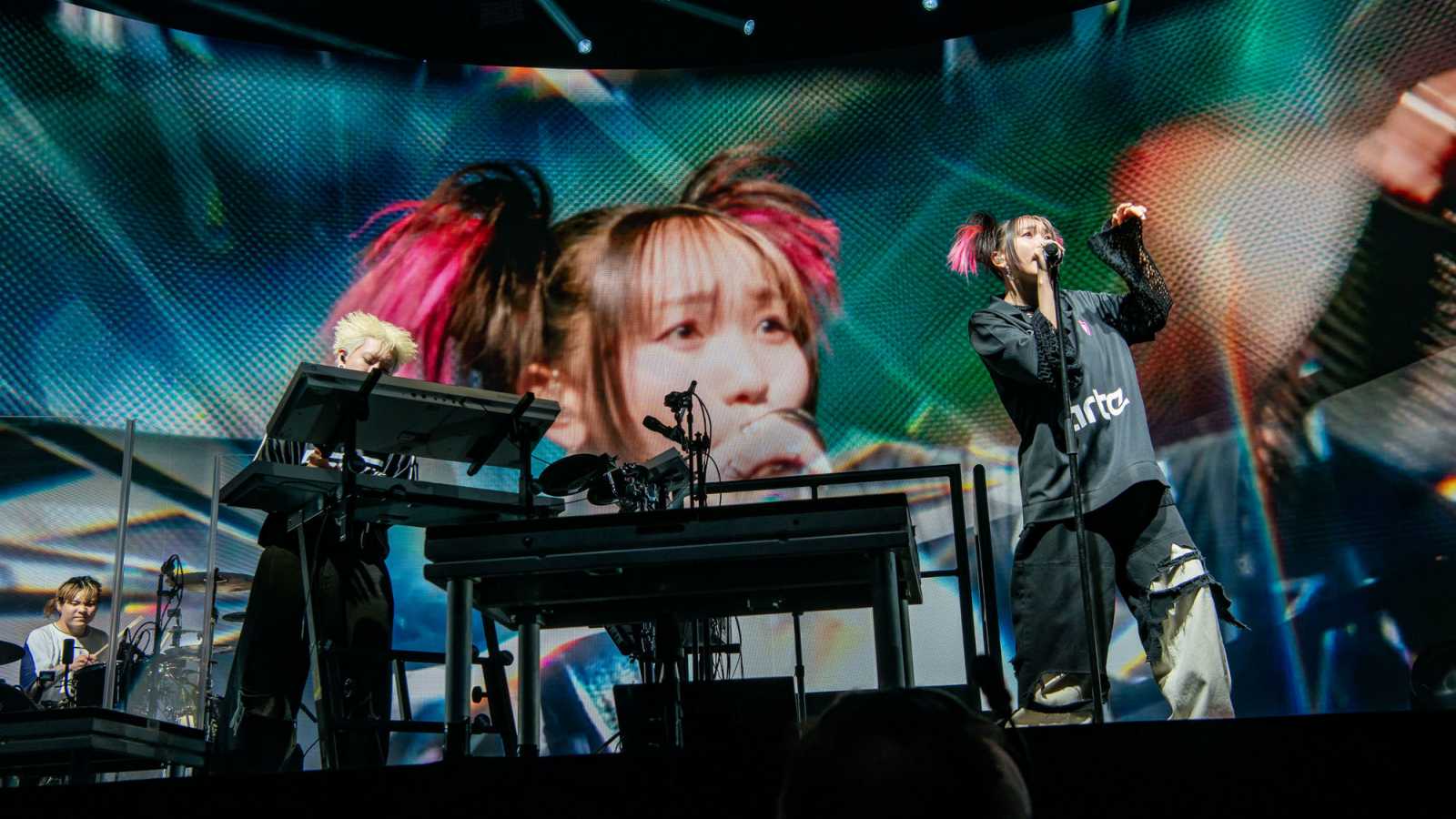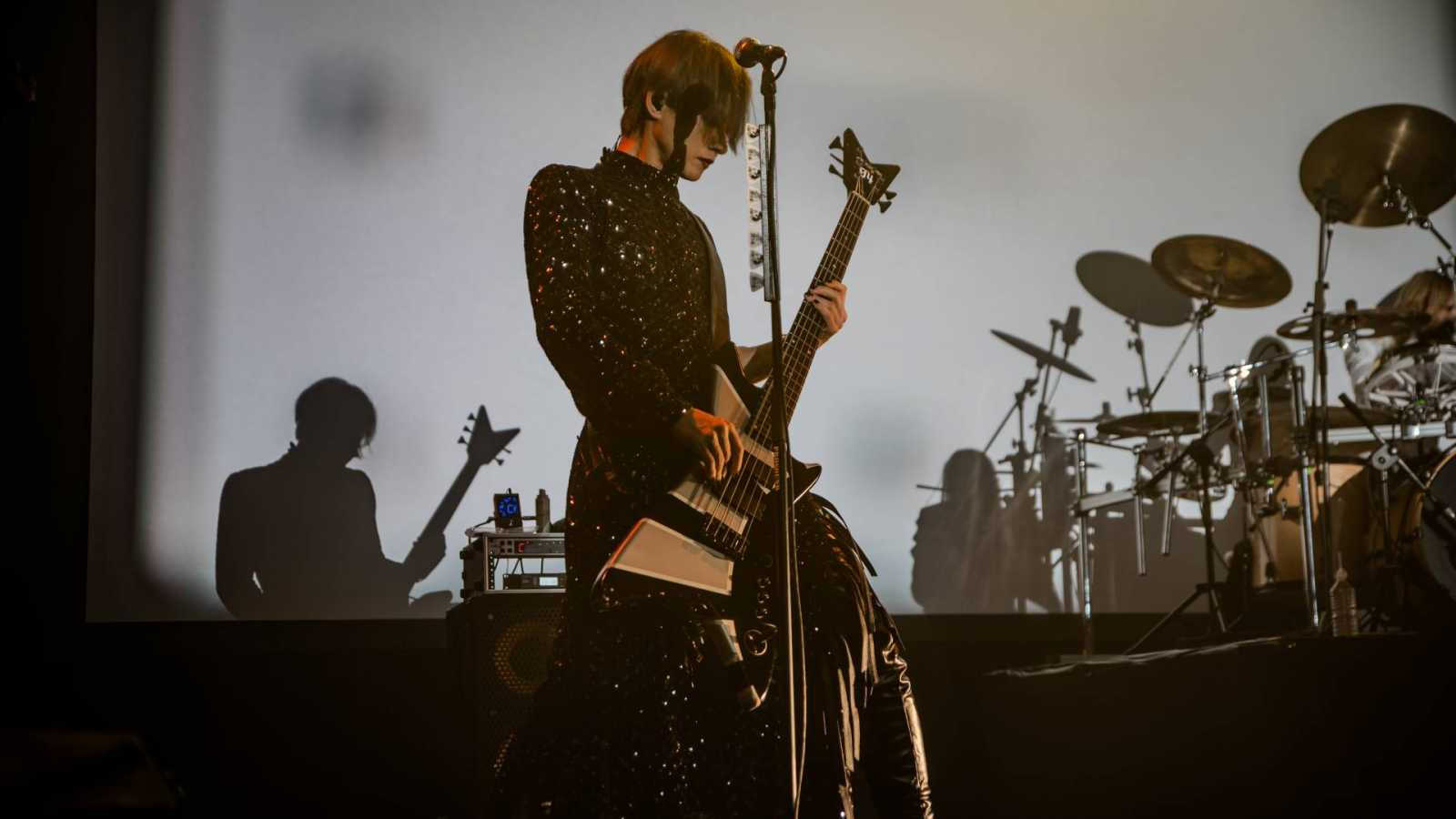One of the most successful visual kei bands of the 90s, KUROYUME remains one of the most influential in the history of the movement.
At the end of the eighties, two former members of the band Garnet - a vocalist named Kiyoharu and a bassist called Hitoki - decided to start a new band together. After the duo was joined by Masaru on guitar, they became KUROYUME. Shortly after the band’s name was decided upon, Masaru left and was replaced by Shin.
The band participated in several multi-band indies events and released two demo tapes in 1991. These demos featured a heavy, dark sound and Kiyoharu's intense vibrato, which would go on to become his trademark feature.
In 1993, they released their first album Ikiteta Chuuzetsuji, which was a CD version of a demo tape of the same name. Then, KUROYUME participated in a large indies event entitled Shock Age that took place on August 23rd in Shibuya Kokaido. They played alongside bands like Eins:Vier, L'Arc~en~Ciel and Silver Rose. They also appeared on the accompanying omnibus album that was sold at the event. Later on, Kiyoharu collaborated with L'Arc~en~Ciel's vocalist Hyde, and the duo performed a cover of the Gastunk song Husk.
In 1994, all of the band’s hard work finally paid off when they caught the eye of executives from Toshiba EMI and were signed to the label. The album Mayoeri Yuritachi was their first major release, and it was accompanied by a slight lightening of their sound.
Their overall look also underwent a change, becoming much less gothic. During this time KUROYUME took many chances and experimented, trying to find their sound. Shortly after the release of the mini-album Cruel, Shin left the band due to creative differences.
Kiyoharu and Hitoki continued on as a duo, having support musicians fill in when needed. Since Shin had been the main songwriter, they were given the opportunity to experiment even further and take KUROYUME in a new direction. In May 1995, their second major album was released.
The band reached a major breakthrough with the release of their 1996 album, Fake Star. It spawned many hit singles, including BEAMS and Pistol, and featured a refreshingly diverse sound.
Changing their style once again in 1997, KUROYUME re-branded themselves as a straightforward, aggressive punk band. The album released during this period, Drug Treatment, was also the band's first release to feature a "Parental Advisory" warning on the cover. This was due in part to the album's title and cover, and the numerous drug and sexual references contained within. This new in-your-face attitude helped the album quickly sell over one million copies.
As a special Halloween treat, KUROYUME held a live at Shinjuku LOFT that was recorded to become a live VHS/DVD and a live album. The performance is especially notable for the small size of the venue, which gives the recordings of it a very intimate atmosphere.
1998 brought what would become KUROYUME's final album for many years, Corkscrew. It featured hit singles such as Shounen and MARIA, as well as a more refined sound. A lengthy tour entitled Many Sex Years volume 5, Corkscrew A Go Go followed. A documentary video was also filmed to be released the next year.
Sadly, in early 1999, the duo announced that they would halt activities, apparently due to Hitoki's health problems. The aforementioned documentary was released, and it also contained backstage footage from lives at the beginning of the year. In it, both members gave their thoughts and feelings on the band's disbandment and the reasons for it in detail.
Eventually, the duo went their separate ways. Kiyoharu formed SADS and embarked on a solo career. He also worked with artists like SUGIZO (LUNA SEA) and Kirito (Angelo, ex-PIERROT), as well as many other well-known stars. In addition, he runs his own label and has produced many young artists, such as Merry, and has his own clothing and silver accessory lines.
Hitoki also released solo work, was a part of many bands and also tried his hand at producing. His most notable activity after the hiatus was announced, however, was becoming a support member for bands such as Creature Creature and ROBOTS.
On January 29, 2009, ten years after the hiatus began, Kiyoharu and Hitoki reunited for a concert at Nippon Budokan titled kuroyume the end, stating that it was to be a final send-off for the band. The live was later released as both an album and DVD.
Ironically, this “final” concert was far from the end as, spurred on by the passing of a friend, KUROYUME decided to reunite for real. KUROYUME and Kiyoharu’s other project SADS both launched new websites and announced new releases in December 2010.
KUROYUME went on to release many new singles, a few DVDs, and an album in the years that followed. Furthermore, a tribute album to the band featuring popular young artists such as The GazettE and SID was released in 2011, showing the enormous impact they have made on the current generation of visual kei musicians. They also presented a monthly program called “Yume Nico” on the Japanese video website Nico Nico Douga for a while, which saw them answer questions from fans, film short, goofy videos about their private lives and compete at drawing cartoon animals.
The year 2013 was another productive one for the duo, as KUROYUME released three singles: Kingdom, Guernika and I HATE YOUR POPSTAR LIFE. Kiyoharu and Hitoki also both took part in the star-studded tribute album to rock band DEAD END, which was released in September.
As 2014 marks the 20th anniversary of their major debut, KUROYUME celebrated with a concert at Nippon Budokan on January 29th. Their album Kuro to kage, originally scheduled to come out in November 2013, was released on the same day.
Constantly evolving both visually and musically, KUROYUME remains one of the top bands to come out of the nineties visual kei scene. More than two decades into their career, their impact and popularity are both undeniable.




